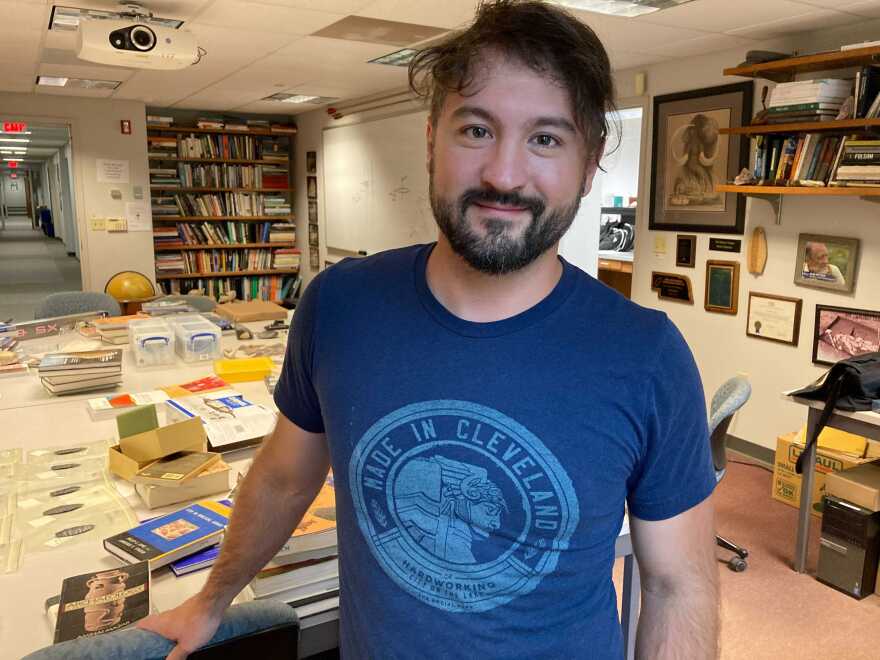Researchers at Kent State University have published an analysis of what could be the largest discovery of Ice Age weaponry in North America.
The collection of 165 stone tools was discovered on a wooded property in Mount Vernon, Ohio.
Researchers believe hunters buried them there around 13,000 years ago.
Turkey led to find
The tools were discovered in 2008 at Camp Cornish, a wooded property in Mount Vernon, Ohio.
William Nelson had noticed a turkey scratching at the base of a small tree.
When he investigated, he noticed that the bird had unearthed a large spear point.
Assisted by his son-in-law Scott Centea and grandson Chase Centea, Nelson eventually found 165 stone tools buried under the tree.
All but one of the artifacts were donated to Kent State University and will become part of the collection at the Cleveland Museum of Natural History.
Evidence points to Clovis culture
Anthropologist Metin Eren and his team spent five years analyzing the points.
He says the evidence indicates they were buried by Ice Age colonizers.
“Based on the totality of our results we actually think this is a Clovis cache, which means it is a cache from the first stone-age Americans, over 13,000 years ago,” said Eren.
The Clovis people are named after Clovis, New Mexico where their artifacts were first discovered a century ago. They’re known for the sophistication of their stone tools, and their adventurousness.
“They were the very first stone age colonizers of most of North America," said Eren.
The Clovis people were master flint knappers.
"They invented a piece of weaponry called the fluted point, which is an incredible piece of hunting equipment, which was also a multifunctional tool,” he said.
Eren says it was not possible to definitively date the stone tools after they were removed from the ground, but several factors point to Clovis origins.
He says there is no evidence that the points were buried for ceremonial reasons, which is often the case for later peoples. Also, several of the spear points have the tell-tale fluting of the Clovis style.
The unfinished state of most of the pieces, he says, also indicates that these were people on the move, colonizing unknown territory.
Eren believes the people hunted caribou and other game as the glaciers retreated in Ohio.
His team has published high resolution photos of the spear points in the latest issue of the Journal of Archeological Science.



Copyright 2021 WKSU



